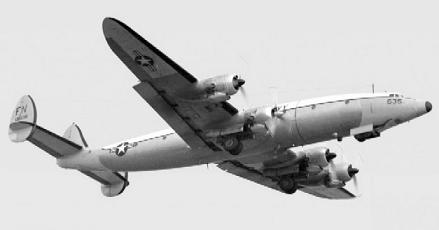This blog contain many fictions, myths, and also facts. It's up to you to choose one or both.
About me

- Agrephino
- Depok, West Java, Indonesia
- My name is Yosafat Jan Diocassa Agrephino. People call me Dio or Yosafat. My birth date is on 8th November 1996. I'm the last child of 4 children. I made this blog just for fun, because i have a lot of free time. One more thing to know, i love peaceful. But if someone got a problem with me, I'll show the real problem
Wednesday, September 21, 2011
Lost Planes In Bermuda Triangle - Flight 441
Flight 441 was a huge carrier that belonged to the US Navy. The civilian or the commercial model of the aircraft is known as the Super Constellation. In military version, it was called R7V-1.
The aircraft was one of the greatest success of its time. It was touted that it could cross the Atlantic in 8 and half hours.
On October 30, 1954, the flight 441 took off from the Patuxent River Naval Air Station bound for Lajes in Azores.
It was carrying 42 passengers - all naval officers and their families who were transported overseas.
Like in many of the Bermuda Triangle incidences, initially there were regular communication received from the aircraft. And suddenly, it was all silent. The last transmission was received around 11:30p.m which was a regular report informing its location. That time the aircraft was about 400 miles off the coast.
And after that, Flight 441 simply vanished. The disappearance of Flight 441 remains as one of the biggest mysteries of Bermuda Triangle. Not even a single clue till date has been gathered to throw any light on the cause.
The incidence was thoroughly investigated by the board, which focussed on the plane itself, the weather and the Pilot Leonard's capability.
The weather was somewhat typical for the North Atlantic at this time of the year - no snowing, sporadic thunderstorms and mild turbulence. But the flight 441, capable of attaining great altitudes, could have easily been above this weather.
Plus the aircraft had a weather radar installed on it which was capable of giving forewarning if there was any adverse weather condition detected. The experienced pilot certainly would have avoided the bad weather based on the indications from this weather radar.
Here is what the board of investigation reported about the Pilot and the weather:
. . .Lt Leonard has been flying the North Atlantic routes for the past two years and it is thought that he was very familiar with this kind of weather. His choice of 17,000 feet altitude for this flight was a good one. According to the weather cross section 19,000 feet would have been an even better altitude. At any rate he should have been on top, for the most part, except for occasional buildup. It must be pointed out that the R7V-1 was equipped with ASP-42 Airborne Radar and is always used when flying this sort of weather.
The Board also reported: “The possibility of structural failure during transit of frontal weather cannot be discounted in this accident, but the possibility appears remote.”
On Pilot's capability, the Board commented:
Lt. Leonard was well trained in thunderstorm penetration speed and technique. It is thought that if he did enter a thunderstorm he would have entered at the correct speed and would have flown the up and down drafts without fighting them. The weather that Lt. Leonard was thought to have been subjected to was not beyond the capabilities of R7V-1, nor was it thought to be beyond his own capabilities.
So what could have happened to the Flight 441?
Let's take a look at the list of cargo carried by the aircraft: 111 life vests, 46 exposure suits, 660 paper cups and 5 life rafts. All these can easily float in water. So, if the plane blew off in the air, all these would have got scattered on the ocean water and could have been traceable. If she simply nose dived into the water without breaking off, the pilot should have sent an SOS. But none, apparently seem to have happened.
Here is what the board had to say finally:
It is the opinion of the Board that R7V-1 BuNo 128441 did meet with a sudden and violent force, that rendered the aircraft no longer airworthy, and was thereby beyond the scope of human endeavor to control. The force that rendered the aircraft uncontrollable is unknown.
Well, I thought it was a classic statement and can probably explain all cases of Bermuda Triangle disappearance in just couple of lines
Subscribe to:
Post Comments (Atom)


No comments:
Post a Comment